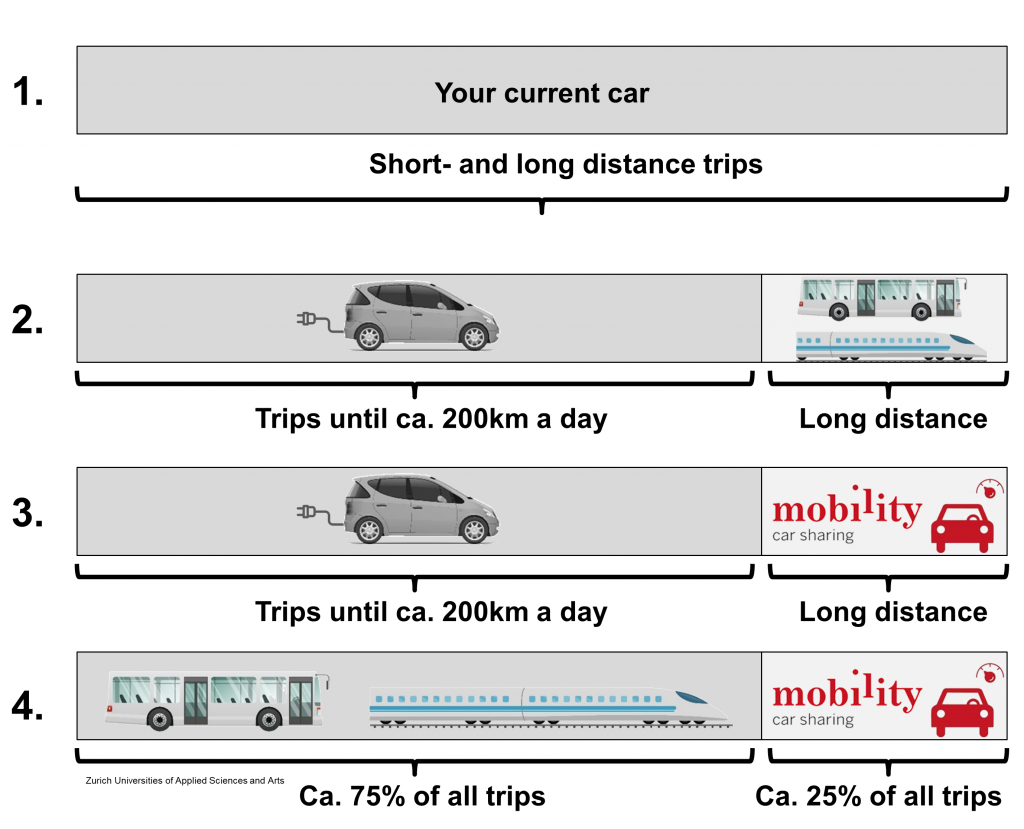What factors increase the openness to switch to a sustainable long-term mobility lifestyle from previously using a combustion engine car?
A lot of research about sustainable mobility is conducted on mode choice behaviour and less so on long-term mobility decisions, especially considering a multimodal mobility lifestyle. We want to close this gap and address the above research question with a comprehensive multiple-price list choice experiment. It is implemented within the Swiss Household Energy Demand Survey (SHEDS) 2020 within the Framework of SCCER Mobility (https://www.sccer-mobility.ch/) and SCCER CREST (https://www.sccer-crest.ch/research/swiss-household-energy-demand-survey-sheds/).
The future of private car mobility is foreseen to be dominantly electric, powered by batteries. Yet, considering environmental impacts of electric vehicles, smaller vehicles with a smaller battery (and thus a smaller range) should be preferred over cars with bigger batteries. This results in a trade-off between range and environmental impact from the battery size. We will address this challenge by proposing alternatives with a small electric vehicle (including a smaller battery) in combination with either public transport or carsharing for long-range trips where the range of the EV is not sufficient. We further propose an alternative without any car ownership, as this would result in an even more sustainable mobility lifestyle.
Participants of the survey were shown a scenario where their main household car would break in 3 years from now. They then have to decide whether they would keep their current mobility lifestyle including the same car or if they would opt for an alternative. The following figure illustrates the 4 different options the respondents of the choice experiment can choose. 1) they could keep their current mobility behaviour including buying the same car again 2) buy a small electric vehicle for everyday trips until 200km a day in combination of using public transport for trips exceeding 200km a day 3) the same small electric vehicle in combination of carsharing for longer trips and 4) using a mix of public transport and carsharing for all trips.

We further included a control group and 3 treatments. Each respondent only answered the control survey or the survey with one of the following treatments:
- Charging treatment: A situation with optimized charging possibilities at home and at work
- Sharing treatment: A situation with optimized carsharing possibilities
- TCO treatment: Information about the total cost of ownership of the current mobility lifestyle and the alternative
First glimps on the results are promising as people who received the charging treatment tend to opt more for the alternatives compared to the control group.
We will finalize the data analysis this year, so stay tuned for updates to this study!